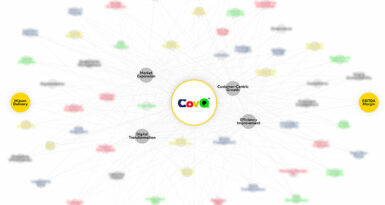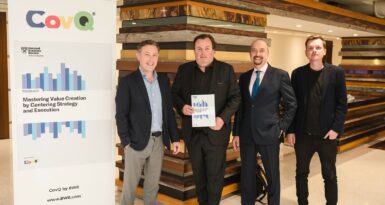
One of the best things about the software industry is its unwavering belief that there is always a better way. No mousetrap that can’t be built better.
This creates an intoxicating energy that flows through the industry’s consciousness. I am sure it is what attracted me to the industry a couple of decades ago and has kept me motivated over the years.
But with intoxication can come blind spots. This brings me to the topic of Product Led Growth. Driven by the successes of companies like Slack, Zoom, Calendly and Dropbox, Product Led Growth—or PLG—is being viewed by some as the new, better, standard for software business models. Some even hail it as “the future of software.” But for all its potential, there can be a dark side to PLG that must be thoroughly understood. The fact is, for many, PLG may not be a better mousetrap.
What is Product Led Growth?
Perhaps the simplest definition of Product Led Growth comes from Blake Bartlett, a partner at OpenView. In his words,
“Product led growth is an end user-focused growth model that relies on the product itself as the primary driver of customer acquisition, conversion, and expansion.”
– Blake Bartlett
In practice, Product Led Growth works like this: you get end-users to try your product for free, they quickly discover its value to them, which leads them to pay to either continue using it or access additional features. They then convince others to try it and the cycle exponentially repeats itself.
Should we use a Freemium Model or offer a Free Trial?
Most product-led revenue models use either a freemium offer—a version of their product with limited features or capacity that the customer can use for as long as they want—or a free trial offer—a full product version the customer can use for a limited period. In either case, the objective is to entice users to experience the product and its value for themselves.
Proponents of Product Led Growth see it as an inevitable evolution for an industry where building a new product is easier, more widely accessible and less expensive than ever; and where software buyers have become conditioned to expect easy, instant and personalized interactions that don’t involve a salesperson. From their perspective, revenue will flow as the product solves real user problems, provides an appealing user experience and becomes “sticky” within users’ daily lives.
This is exactly what has happened for the bellwether PLG companies whose customer growth, revenue and valuations have skyrocketed. But before driving full speed into the PLG camp, it would be wise to consider the major potholes that can slow or completely derail the trip for Product Led Growth companies.
The Underestimated Product Led Growth Risk Factors
Ultimately, the business success of a Product Led Growth strategy depends entirely on free customers self-converting to paying customers and remaining as such over time. Yet there are elements of the PLG model that make it difficult for some companies to generate the conversion and long-term retention they need to succeed.
The inverse correlation between behavior change and conversion
All software applications require a degree of behavior change—some more than others. Narrow point solutions like Zoom, Buffer and Slack need only small behavior changes for users to get up and running and experience value. Other software products require much more significant behavior changes.
Companies using a Product Led Growth Strategy bank on users making the necessary behavior changes to justify upgrading to a paid version. In fact, they build their products for maximum ease of use and stack their websites with helpful guides and tutorials to make that happen. But what if the product were more complex, requiring the user to load inventory or convert data? Or require a business to change its workflow or involve other systems?
For many users, this would involve a significant commitment of time and expense, and likely require company-provided or third-party human support. When that happens, the chances the user would realize enough value from their free-use to justify an upgrade drop dramatically.
“Free” can get in the way of “now”
In general, a freemium model is doing really well when it converts 5% of its free users to paid users—which means that, even for strong performers, 95% do not convert. While this can be quite acceptable for some software companies, it highlights the fact that conversion is hard. Because freemium users have no skin in the game, many have no pressing incentive to make the behavior changes required to get the software to deliver a return on their investment. So they keep the free version a while longer.
Don’t forget, that at the initial signup, most customers are excited about the product, enough that some would have paid for it then and there. Instead, the free period delays the urgency, setting up a looming crisis event when the customer who would have bought earlier must decide if they want to buy now. Think of what can go wrong during the lag time. The user may have lost some of their original enthusiasm, back-burnered using the product (after all, it didn’t cost them anything), or even found a competitive product they like more.
Poor-fit customers can weaken the product over time
Freemium opens the aperture of the types of customers you will attract. While that sounds great—”More customers? Bring ‘em on!”—it can also wreak havoc on long-term product focus and customer churn.
How? Most products have a profile of their ideal customers—the ones for whom the product was designed, who can best derive value from it and who will remain a customer for the long haul. By design, a freemium or free trial model lowers the barriers to customer entry, which ensures the customer population will include many users who stray from the ideal profile. Those users may have needs the product doesn’t address, be too small to get value from key features, or need the product to integrate in ways that it doesn’t. Regardless, the more poor-fits in your customer base, the more difficult it is to maintain your focus, as they will want to pull your product in their direction, not yours.
This can prevent a clear understanding of what your ideal customers really want from your product, how they use it and how they derive value from it. As Greg Daines, CEO of Client Velocity says,
“Customer success is all about patterns. See enough patterns and the organization develops expertise, which influences product development in a virtuous cycle. It makes companies really smart.”
– Greg Daines, CEO of Client Velocity
But when the aperture of customer acquisition is too wide, the patterns and customer success disappear. Product elements, from customer support content to feature development, can be forced to become generic to serve the masses. Over time, the company doesn’t get smarter about its customer—rather the opposite. Then the ideal customers don’t get what they need and the virtuous cycle becomes a vicious cycle of churn.
End users aren’t always the real buyers
Intentionally, PLG turns traditional selling upside down. The whole idea is to amass a large group of end-users who don’t need an approved budget or business plan to get into the product. They can act independently, fall in love with the product, champion it and create a groundswell that leads to adoption throughout the enterprise.
This can be a problem for B2B software companies hoping to penetrate deeply into a corporate environment. End users can have completely different perspectives and priorities than those who control the corporate purse strings. They may lack the skill, experience or standing to build an effective business case or win executive sponsorship for large-scale deployment. Without that support, uplift can be limited to very specific niche use cases that expand slowly, if at all, beyond their initial footprint.
Monetization strategies can get baked into the product too early
Beyond the challenge of converting and retaining customers, PLG models force certain monetization-driven “gearing” decisions to be made early—sometimes too early—in the product development stage. Take, for example, a decision to count API calls as the licensing metric on which pricing will be based. The product development team must gear the software to monitor and entitle API calls so that free customers are capped and paying customers are charged for their usage. Yet, because effective monetization involves testing and validating hypotheses within real-world transactions, what happens when it is later discovered that API calls are not the ideal licensing metric?
The early gearing for PLG can paint you into a corner before the right data and analysis can be generated.
Do your due diligence before implementing a Product Led Growth Strategy
In the right situations, a Product Led Growth Model can be a viable strategy for software companies. However, it’s important to be aware of the potential pitfalls so you can avoid them and maintain your focus on what’s best for your product and customers. Evaluate it carefully; “the right situation” may be much more limited than the current hype can lead you to believe.




